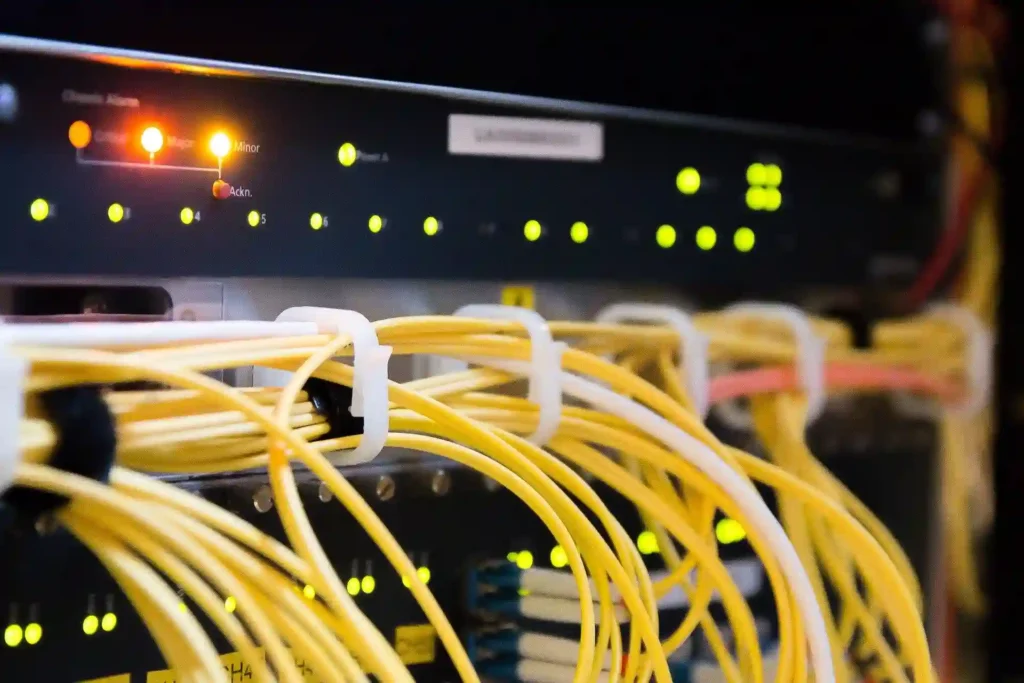In the article How to Enhance Network Performance for Remote Work and Well-Being, the importance of network performance is explored.
It discusses the challenges of maintaining a strong network connection while working remotely and how it can impact productivity and well-being.
By blending the title, headings, subheadings, and primary keyword, a logical and coherent article concept will be created to help bridge any gaps and provide valuable insights on optimizing network performance for remote work.
Understanding the Importance of Network Performance
To ensure a smooth and efficient remote work experience, you need to understand why network performance is important.
Network performance refers to the speed and reliability of your internet connection. A strong network performance allows for faster data transfer, quicker loading times, and seamless video conferencing. It ensures that you can access and share information without delays or interruptions, ultimately improving productivity and reducing frustration.
In today’s digital age, where remote work is becoming increasingly common, having a reliable network performance is crucial for success.

Assessing Current Network Performance for Remote Work
Assessing the current network performance for remote work is crucial for enhancing network performance and ensuring well-being.
With the increasing reliance on remote work, organizations need to evaluate their network infrastructure to identify any limitations or bottlenecks.
This assessment helps in identifying areas that require improvement to optimize network performance. By doing so, employees can work efficiently and without interruptions, leading to increased productivity and overall well-being.
Regular evaluations and improvements are essential for maintaining a smooth and reliable network for remote work.
Identifying Common Network Performance Issues
By identifying common network performance issues, you can effectively address and resolve them to ensure optimal network performance for your remote work.
It is essential to identify issues such as slow internet speed, frequent disconnections, and high latency. These problems can disrupt your workflow and hinder productivity.
Strategies to Improve Network Performance for Remote Work
Implementing strategies to improve network performance for remote work can greatly enhance productivity and efficiency.
One effective strategy is to ensure a stable internet connection by using a wired connection instead of relying solely on Wi-Fi.
Additionally, optimizing router settings and updating firmware regularly can improve network speed and reliability.
Finally, using a virtual private network (VPN) can help secure data and minimize network congestion.
Optimizing Network Infrastructure for Enhanced Performance
Optimizing network infrastructure can lead to enhanced network performance for remote work. By ensuring that the network infrastructure is properly configured, businesses can experience improved connectivity and faster data transfer rates.
This allows remote workers to access necessary resources and collaborate seamlessly. Optimizing network infrastructure involves evaluating the network’s capacity, upgrading hardware and software, and implementing effective security measures.
These steps can help organizations create a more efficient and reliable network environment, ultimately improving network performance for remote work.
Implementing Best Practices for Network Performance Improvement
To improve network performance for remote work, you can implement best practices that optimize network infrastructure. By following these practices, such as regularly updating firmware and software, using quality networking equipment, and optimizing bandwidth allocation, you can ensure a stable and efficient network connection.
Additionally, implementing network security measures like firewalls and VPNs can help protect sensitive data and prevent any potential disruptions. These best practices will enhance network performance and ultimately contribute to a smoother remote work experience.
Conclusion
In conclusion, improving network performance is crucial for successful remote work and overall well-being.
By assessing current network performance, identifying common issues, and implementing strategies to enhance performance, individuals can ensure a smooth and efficient remote work experience.
Optimizing network infrastructure and adhering to best practices further contribute to network performance improvement.
With a reliable and efficient network, individuals can maximize productivity, minimize disruptions, and maintain a healthy work-life balance.
Enhancing network performance is an essential step in creating a conducive remote work environment.
You may also like to read:
A Complete Guide To Transform Your Health With Chiropractic Rehabilitation
